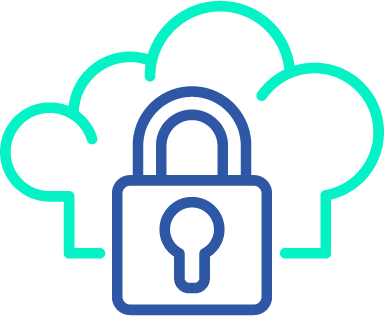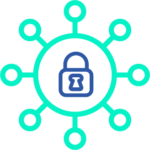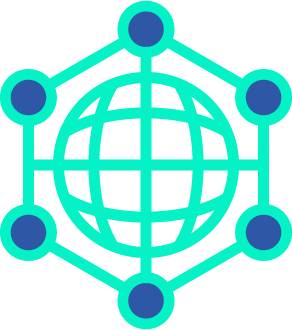Solutions
Our security solutions will solve your most-pressing business challenges!
Enovise offers a range of security solutions that respond to the unique challenges of your business. Our solutions are tailored to meet the security requirements of a modern day businesses and help you achieve your business objectives.
Cloud Security
Endpoint Security
Enterprise Fraud Management
Enterprise Network Security
Governance, Risk & Compliance
Identity & Access Management

Cloud Security
According to Gartner, Cloud security refers to the processes, mechanisms, and services used to control the security, compliance, and other usage risks of cloud computing. Although all forms of cloud computing have unique security needs, this term primarily refers to public cloud computing. It specifically addresses the security of the cloud service and security within the cloud service, but the term does not encompass security services delivered from the cloud (security as a service) that are intended to be used outside the cloud.
Enovise provides solutions that assist your organization with solving the key cloud security threats:
- System vulnerabilities are the technical side of threats that must be handled proactively by IT-capable staff.
- Endpoint user error or negligence is the human side that requires continuous training and education to prevent.
- Malicious cyber attackers are ultimately only as powerful as the human and technical weaknesses in a cloud system allow them to be. However, experience in the manipulation of both technical and human elements gives attackers an advantage.
Endpoint Security

Endpoint Security is the critical last line of defense in preventing cyber-attacks from compromising those devices and in protecting your sensitive information from falling into the wrong hands. That’s why you need the best possible protection everywhere your data lives.
Why is Endpoint Security Important?
Endpoint security is moving quickly beyond malware:
- 33% increase in mobile ransomware
- 600% increase in IoT attacks
- 80% Increase in iOS and Android vulnerabilities
- 56% Increase in risky Wi-Fi networks
- 54% increase in mobile malware variants
- 70+ million records stolen or leaked due to poor AWS configuration

Enterprise Network Security
The frequency and sophistication of malicious, cybersecurity attacks only continue to increase. Organizations need to protect their critical information assets by taking a multi-layered approach to network security. Network security is any activity designed to protect the usability and integrity of your network and data.
- It includes both hardware and software technologies
- It targets a variety of threats
- It stops them from entering or spreading on your network
- Effective network security manages access to the network
Network security components consist of many pieces, including:
- Anti-virus and anti-spyware
- Web protection
- Email security
- Backup and recovery
Enterprise Fraud Management
According to the PwC Global Economic Crime and Fraud Survey 2020, fraud costs businesses $42B worldwide.
Enterprise fraud management (EFM) software supports the detection, analytics and management of fraud across users, accounts, products, processes and channels.
It monitors and analyzes user activity and behavior at the application level (rather than at the system, database or network level), and watches what transpires inside and across accounts, using any channel available to a user.
It also analyzes behavior among related users, accounts or other entities, looking for organized criminal activity, fraud rings, corruption or misuse.
Our Next Generation EFM solutions have evolved from basic, rules-based detection systems. This is achieved through predictive risk assessment using big data, advanced analytics, as well as machine learning to better detect and manage the growing fraud problem. Our EFM solutions are shaped by the four emerging trends, giving financial institutions and businesses more protection than ever:
Use of advanced analytics
Our EFM solutions combine advanced analytical approaches to identify subtle and non-intuitive patterns in behavior to detect fraud and even predict future risks. Examples of techniques include pattern analysis, which compares user activity with past behavior and that of their peer group to identify outliers, and model development, in which statistical analysis is used to provide quantitative insight into suspicious activity
Next generation authentication
Cybercrime often gets committed as a result of the most trivial missteps, like a customer using a weak password. Financial institutions are now striving to improve the security of transactions through stronger authentication techniques like two-factor authentication or biometric authentication enabled through mobile technology.
A behavioral analytics-based approach
Rules-based fraud detection systems have many flaws that cause fraudulent activity to slip through the cracks and go undetected. Fraudsters are getting more sophisticated, so it’s essential that fraud management systems improve at a faster pace. Our EFM systems and solutions make use of adaptive analytics that can use machine learning to detect unknown risks and new fraud techniques before they happen. A behavioral analytics approach helps this endeavor by collecting behavioral data from all sources and channels and comparing it against each new activity.
Real-time monitoring
Governance, Risk and Compliance (GRC)

GRC tools are also useful for preventing and addressing vulnerabilities that will inevitably impact your systems, resources, and stakeholders. Further, managing the short-term and long-term policies and procedures of your organization can be challenging without an effective GRC strategy in place. Governance, Risk and Compliance has three main components:
Risk
Making sure that any risk (or opportunity) associated with organizational activities is identified and addressed in a way that supports the organization’s business goals.
In the IT context, this means having a comprehensive IT risk management process that rolls into an organization’s enterprise risk management function.
Governance
Ensuring that organizational activities, like managing IT operations, are aligned in a way that supports the organization’s business goals
Compliance
Making sure that organizational activities are operated in a way that meets the laws and regulations impacting those systems. In the IT context, this means making sure that IT systems, and the data contained in those systems, are used and secured properly.
Identity and Access Management (IAM)

IAM solutions ensure the right individuals have access to the right IT resources, for the right reasons, at the right time.
Identity and access management (IAM) ensures that the right people and job roles in your organization (identities) can access the tools they need to do their jobs. Identity management and access systems enable your organization to manage employee apps without logging into each app as an administrator.
Identity and access management systems enable your organization to manage a range of identities including people, software, and hardware like robotics and IoT devices
Why does your organization need IAM solution?
- Security. Traditional security often has one point of failure – the password. If a user’s password is breached – or worse yet, the email address for their password recoveries – your organization becomes vulnerable to attack. IAM services narrow the points of failure and backstops them with tools to catch mistakes when they’re made.
- Productivity. Once you log on to your main IAM portal, your employee no longer has to worry about having the right password or right access level to perform their duties. Not only does every employee get access to the perfect suite of tools for their job, their access can be managed as a group or role instead of individually, reducing the workload on your IT professionals.
Have you experience a breach?
Get immediate incident response assistance
Call: +254 (02) 515 4097 (KE) • +250 787 856 970 (RW) • +44 7810 402477 (UK) • +267 76 407 313 (BW)